In today’s dynamic world, the daily grind can often overshadow the broader societal canvas we’re all a part of. However, an emerging and encouraging trend over the past few years has been a growing focus on giving back to society. According to the
Charities Aid Foundation, global giving has increased, with many countries witnessing a rise in the percentage of their populations who donate. This emphasis, evident in both individuals and businesses, speaks volumes about evolving human values and the changing paradigm of what success looks like.
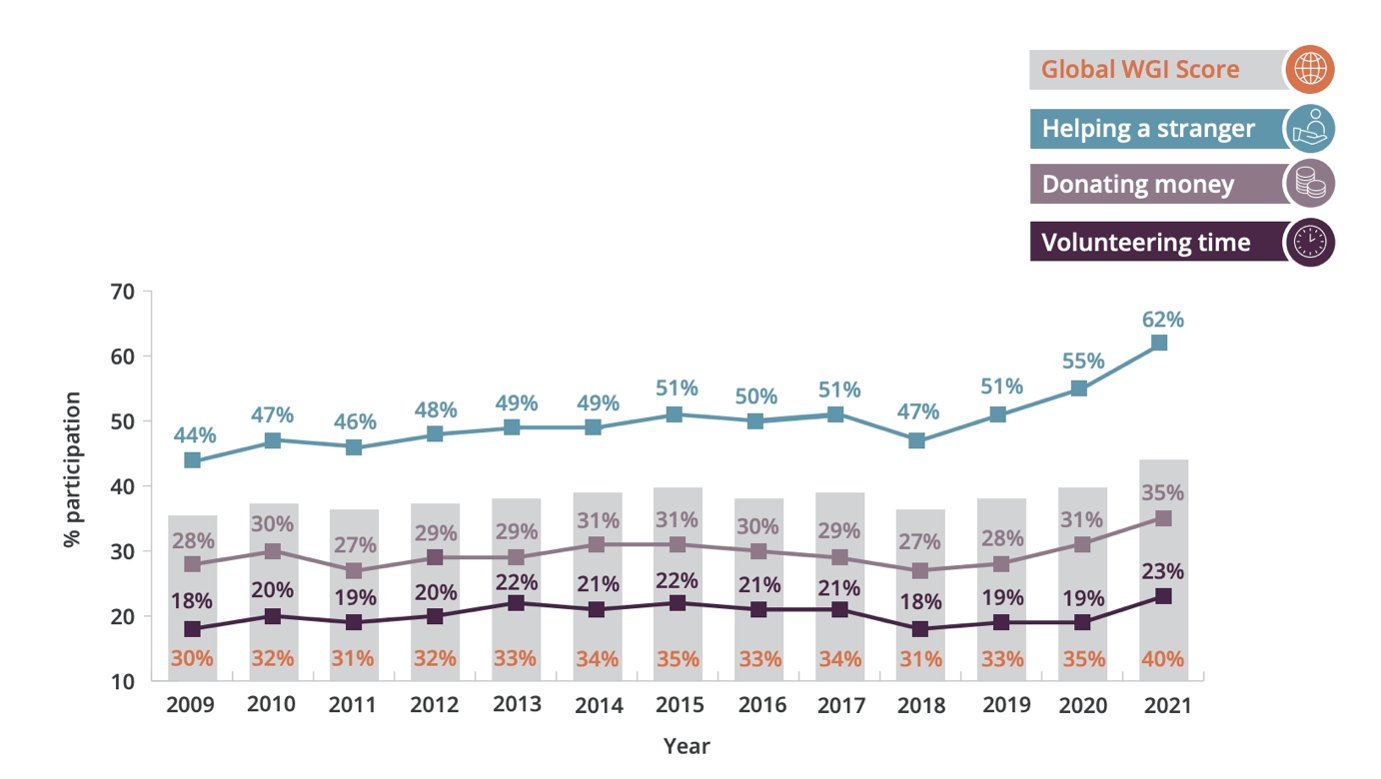
Source: https://www.cafonline.org/docs/default-source/about-us-research/caf_world_giving_index_2022_210922-final.pdf
The Innate Drive to Give Back
From ancient civilizations where community thrived on mutual support, to today’s globalized world, the human instinct to help has remained robust. Now, with the amplification powers of technology and communication, awareness about global issues has skyrocketed. A LinkedIn report noted an increase in volunteering activities listed on user profiles, showcasing this heightened consciousness nudging many towards meaningful actions that make a difference.
The UN’s Sustainable Development Goals (SDGs) and Their Influence
The
United Nations’ 17 SDGs, established in 2015, serve as a universal call to action to end poverty, protect the planet, and ensure prosperity for all by 2030. The
UNDP reported an estimated annual investment of $3 trillion in 2020 dedicated to achieving these objectives. These goals have illuminated the path for nations, businesses, and individuals, emphasizing the importance of collaborative efforts. The SDGs underscore the truth that societal progress is intricately linked with environmental and economic factors. And as more entities align their giving-back strategies with these goals, the dream of a sustainable and inclusive world seems increasingly achievable.
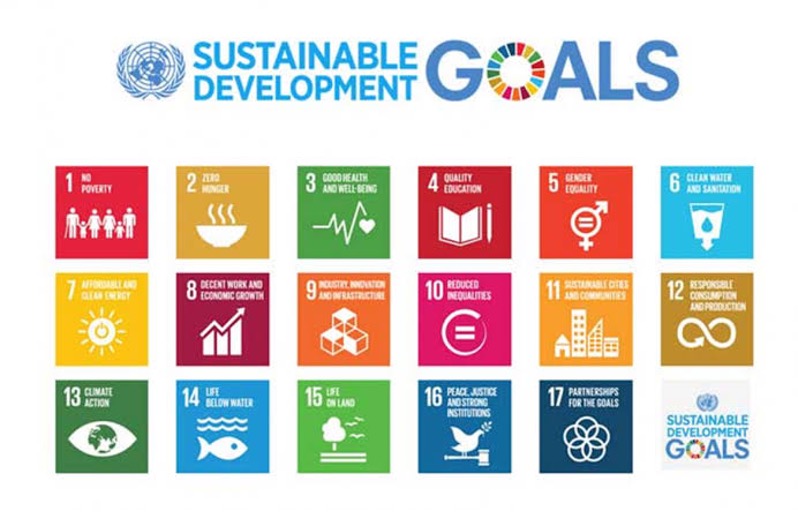 Rise of ESG and Corporate Social Responsibility (CSR)
Rise of ESG and Corporate Social Responsibility (CSR)
Environmental, Social, and Governance (ESG) criteria have revolutionized the way businesses operate and invest. A
Morgan Stanley survey from 2020 found that 85% of individual investors expressed interest in sustainable investing. Companies that follow ESG principles focus on more than just profits; they measure success by their impact on the world. This has naturally extended to Corporate Social Responsibility (CSR). No longer a mere checkbox, CSR has become a core part of modern business strategies. A
study by Cone Communications revealed that a majority of consumers align their purchasing decisions with brands resonating with societal values. This has prompted corporations to proactively participate in initiatives that support community upliftment, sustainable practices, and overall positive societal impacts.
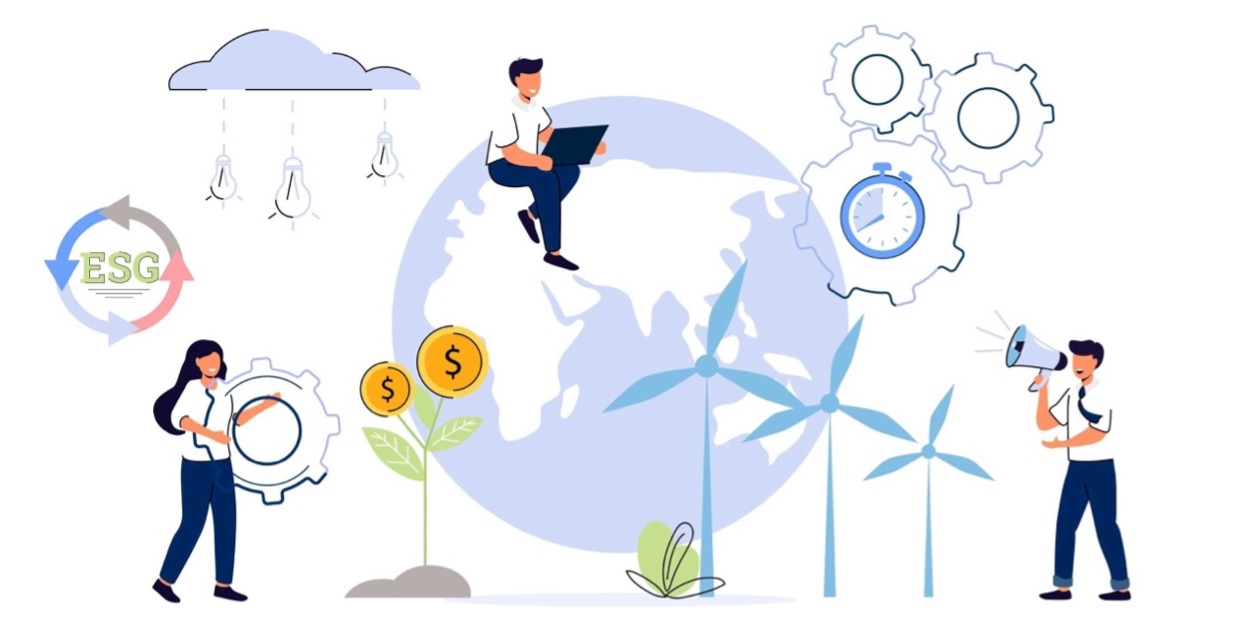 Individual Contributions: Beyond Monetary Aid
Individual Contributions: Beyond Monetary Aid
While financial donations play a crucial role, the spirit of giving back encapsulates much more. From volunteering to offering pro bono expertise, the avenues to contribute are numerous. Platforms like
Catchafire, which connect professionals willing to share their skills with nonprofits, have bridged vast socio-economic gaps, creating pockets of growth and empowerment.
The Power of Grassroots Movements
Historically, and even today, grassroots movements hold immense transformative power. For instance, campaigns targeting sanitation have achieved rapid increases in rural sanitation coverage in select regions. Tailored solutions arising from community-driven initiatives ensure that change is not just profound but also sustainable. As these movements align more with the UN’s SDGs, their potential for global impact multiplies.
Benefits of Giving Back
The act of giving nurtures a sense of fulfilment and unity. For the giver, it’s a journey to the “helper’s high,” a state of happiness stemming from acts of kindness. For businesses, all data suggests that a significant portion of global consumers prefers sustainable goods, suggesting that giving back not only boosts brand image but also caters to market demands, motivates employees, and opens up new growth avenues. For more on this, read our earlier blog on
How Doing Good Can Be Good for Business.
The trend of giving back, further amplified by global objectives like the UN’s SDGs and principles like ESG, marks a promising shift in societal dynamics. We’re moving from isolated efforts to a global, concerted push towards a better future. It’s a beautiful reminder of our shared destiny and the interwoven fabric of humanity. As we inch closer to a world where giving back is the norm rather than the exception, we can hope for a future that’s not only prosperous but also inclusive and sustainable.
For those looking to give back, whether as individuals or corporates, consulting firms such as
Vardaan offer expert guidance on strategy and process to ensure your philanthropic goals are successfully achieved.
 Source: https://www.cafonline.org/docs/default-source/about-us-research/caf_world_giving_index_2022_210922-final.pdf
The Innate Drive to Give Back
From ancient civilizations where community thrived on mutual support, to today’s globalized world, the human instinct to help has remained robust. Now, with the amplification powers of technology and communication, awareness about global issues has skyrocketed. A LinkedIn report noted an increase in volunteering activities listed on user profiles, showcasing this heightened consciousness nudging many towards meaningful actions that make a difference.
The UN’s Sustainable Development Goals (SDGs) and Their Influence
The United Nations’ 17 SDGs, established in 2015, serve as a universal call to action to end poverty, protect the planet, and ensure prosperity for all by 2030. The UNDP reported an estimated annual investment of $3 trillion in 2020 dedicated to achieving these objectives. These goals have illuminated the path for nations, businesses, and individuals, emphasizing the importance of collaborative efforts. The SDGs underscore the truth that societal progress is intricately linked with environmental and economic factors. And as more entities align their giving-back strategies with these goals, the dream of a sustainable and inclusive world seems increasingly achievable.
Source: https://www.cafonline.org/docs/default-source/about-us-research/caf_world_giving_index_2022_210922-final.pdf
The Innate Drive to Give Back
From ancient civilizations where community thrived on mutual support, to today’s globalized world, the human instinct to help has remained robust. Now, with the amplification powers of technology and communication, awareness about global issues has skyrocketed. A LinkedIn report noted an increase in volunteering activities listed on user profiles, showcasing this heightened consciousness nudging many towards meaningful actions that make a difference.
The UN’s Sustainable Development Goals (SDGs) and Their Influence
The United Nations’ 17 SDGs, established in 2015, serve as a universal call to action to end poverty, protect the planet, and ensure prosperity for all by 2030. The UNDP reported an estimated annual investment of $3 trillion in 2020 dedicated to achieving these objectives. These goals have illuminated the path for nations, businesses, and individuals, emphasizing the importance of collaborative efforts. The SDGs underscore the truth that societal progress is intricately linked with environmental and economic factors. And as more entities align their giving-back strategies with these goals, the dream of a sustainable and inclusive world seems increasingly achievable.
 Rise of ESG and Corporate Social Responsibility (CSR)
Environmental, Social, and Governance (ESG) criteria have revolutionized the way businesses operate and invest. A Morgan Stanley survey from 2020 found that 85% of individual investors expressed interest in sustainable investing. Companies that follow ESG principles focus on more than just profits; they measure success by their impact on the world. This has naturally extended to Corporate Social Responsibility (CSR). No longer a mere checkbox, CSR has become a core part of modern business strategies. A study by Cone Communications revealed that a majority of consumers align their purchasing decisions with brands resonating with societal values. This has prompted corporations to proactively participate in initiatives that support community upliftment, sustainable practices, and overall positive societal impacts.
Rise of ESG and Corporate Social Responsibility (CSR)
Environmental, Social, and Governance (ESG) criteria have revolutionized the way businesses operate and invest. A Morgan Stanley survey from 2020 found that 85% of individual investors expressed interest in sustainable investing. Companies that follow ESG principles focus on more than just profits; they measure success by their impact on the world. This has naturally extended to Corporate Social Responsibility (CSR). No longer a mere checkbox, CSR has become a core part of modern business strategies. A study by Cone Communications revealed that a majority of consumers align their purchasing decisions with brands resonating with societal values. This has prompted corporations to proactively participate in initiatives that support community upliftment, sustainable practices, and overall positive societal impacts.
 Individual Contributions: Beyond Monetary Aid
While financial donations play a crucial role, the spirit of giving back encapsulates much more. From volunteering to offering pro bono expertise, the avenues to contribute are numerous. Platforms like Catchafire, which connect professionals willing to share their skills with nonprofits, have bridged vast socio-economic gaps, creating pockets of growth and empowerment.
The Power of Grassroots Movements
Historically, and even today, grassroots movements hold immense transformative power. For instance, campaigns targeting sanitation have achieved rapid increases in rural sanitation coverage in select regions. Tailored solutions arising from community-driven initiatives ensure that change is not just profound but also sustainable. As these movements align more with the UN’s SDGs, their potential for global impact multiplies.
Benefits of Giving Back
The act of giving nurtures a sense of fulfilment and unity. For the giver, it’s a journey to the “helper’s high,” a state of happiness stemming from acts of kindness. For businesses, all data suggests that a significant portion of global consumers prefers sustainable goods, suggesting that giving back not only boosts brand image but also caters to market demands, motivates employees, and opens up new growth avenues. For more on this, read our earlier blog on How Doing Good Can Be Good for Business.
The trend of giving back, further amplified by global objectives like the UN’s SDGs and principles like ESG, marks a promising shift in societal dynamics. We’re moving from isolated efforts to a global, concerted push towards a better future. It’s a beautiful reminder of our shared destiny and the interwoven fabric of humanity. As we inch closer to a world where giving back is the norm rather than the exception, we can hope for a future that’s not only prosperous but also inclusive and sustainable.
For those looking to give back, whether as individuals or corporates, consulting firms such as Vardaan offer expert guidance on strategy and process to ensure your philanthropic goals are successfully achieved.
Individual Contributions: Beyond Monetary Aid
While financial donations play a crucial role, the spirit of giving back encapsulates much more. From volunteering to offering pro bono expertise, the avenues to contribute are numerous. Platforms like Catchafire, which connect professionals willing to share their skills with nonprofits, have bridged vast socio-economic gaps, creating pockets of growth and empowerment.
The Power of Grassroots Movements
Historically, and even today, grassroots movements hold immense transformative power. For instance, campaigns targeting sanitation have achieved rapid increases in rural sanitation coverage in select regions. Tailored solutions arising from community-driven initiatives ensure that change is not just profound but also sustainable. As these movements align more with the UN’s SDGs, their potential for global impact multiplies.
Benefits of Giving Back
The act of giving nurtures a sense of fulfilment and unity. For the giver, it’s a journey to the “helper’s high,” a state of happiness stemming from acts of kindness. For businesses, all data suggests that a significant portion of global consumers prefers sustainable goods, suggesting that giving back not only boosts brand image but also caters to market demands, motivates employees, and opens up new growth avenues. For more on this, read our earlier blog on How Doing Good Can Be Good for Business.
The trend of giving back, further amplified by global objectives like the UN’s SDGs and principles like ESG, marks a promising shift in societal dynamics. We’re moving from isolated efforts to a global, concerted push towards a better future. It’s a beautiful reminder of our shared destiny and the interwoven fabric of humanity. As we inch closer to a world where giving back is the norm rather than the exception, we can hope for a future that’s not only prosperous but also inclusive and sustainable.
For those looking to give back, whether as individuals or corporates, consulting firms such as Vardaan offer expert guidance on strategy and process to ensure your philanthropic goals are successfully achieved. 
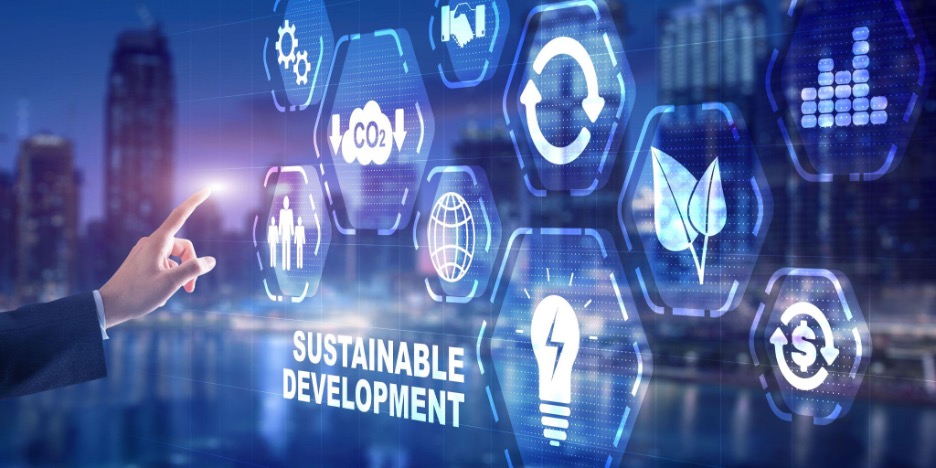
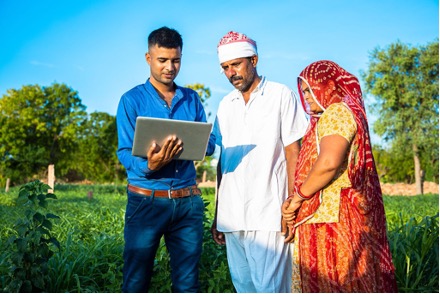 India has made impressive strides in its efforts to eradicate poverty and achieve inclusive growth. According to a UN report, an astounding 415 million people have been lifted out of poverty in India over the past 15 years, reflecting a significant reduction in the percentage of people living below the poverty line. This feat can be attributed to various social welfare schemes and poverty alleviation initiatives implemented by the government.
One of the most noteworthy programs contributing to poverty reduction is the Mahatma Gandhi National Rural Employment Guarantee Act (MGNREGA). This flagship scheme guarantees 100 days of wage employment in a financial year to rural households, providing a crucial safety net for the vulnerable population. The successful implementation of MGNREGA has resulted in enhanced income opportunities and improved standards of living for millions of households across the country.
Additionally, initiatives like the Pradhan Mantri Jan Dhan Yojana (PMJDY) have played a pivotal role in financial inclusion. As of 2023, more than 400 million bank accounts have been opened under PMJDY, ensuring that marginalized sections of society have access to formal banking services and government welfare schemes. This has contributed to reducing income inequalities and enhancing financial empowerment.
Quality Education and Skill Development:
India has made impressive strides in its efforts to eradicate poverty and achieve inclusive growth. According to a UN report, an astounding 415 million people have been lifted out of poverty in India over the past 15 years, reflecting a significant reduction in the percentage of people living below the poverty line. This feat can be attributed to various social welfare schemes and poverty alleviation initiatives implemented by the government.
One of the most noteworthy programs contributing to poverty reduction is the Mahatma Gandhi National Rural Employment Guarantee Act (MGNREGA). This flagship scheme guarantees 100 days of wage employment in a financial year to rural households, providing a crucial safety net for the vulnerable population. The successful implementation of MGNREGA has resulted in enhanced income opportunities and improved standards of living for millions of households across the country.
Additionally, initiatives like the Pradhan Mantri Jan Dhan Yojana (PMJDY) have played a pivotal role in financial inclusion. As of 2023, more than 400 million bank accounts have been opened under PMJDY, ensuring that marginalized sections of society have access to formal banking services and government welfare schemes. This has contributed to reducing income inequalities and enhancing financial empowerment.
Quality Education and Skill Development:
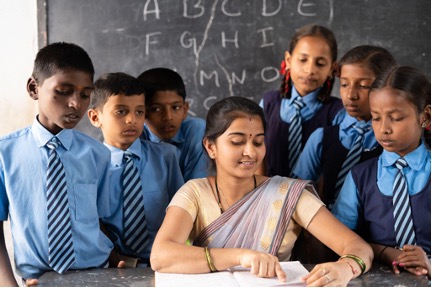 India’s commitment to improving the quality of education and skill development has been evident through various initiatives. The Right to Education Act, which guarantees free and compulsory education for children aged 6 to 14, has increased school enrollment rates significantly, indicating improved access to education for children.
In terms of skill development, the Skill India Mission has focused on providing vocational training and upskilling opportunities to the youth, making them more employable in a competitive job market.
Healthcare and Well-being:
India’s commitment to improving the quality of education and skill development has been evident through various initiatives. The Right to Education Act, which guarantees free and compulsory education for children aged 6 to 14, has increased school enrollment rates significantly, indicating improved access to education for children.
In terms of skill development, the Skill India Mission has focused on providing vocational training and upskilling opportunities to the youth, making them more employable in a competitive job market.
Healthcare and Well-being:
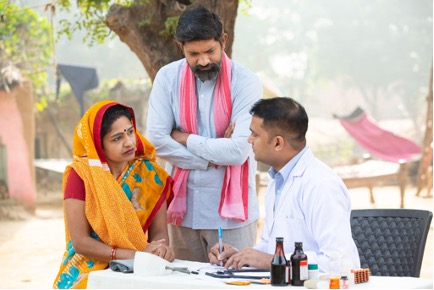 India’s progress in achieving health-related SDGs has been mixed. While there have been notable achievements in reducing the burden of diseases like tuberculosis, malaria, and HIV/AIDS, challenges remain in specific health indicators.
According to a study published in The Lancet, India is likely to miss the deadline for several health-related SDG indicators, including maternal mortality and malnutrition. Maternal mortality rates continue to be a concern, with approximately 113 maternal deaths per 100,000 live births. Similarly, the prevalence of malnutrition remains a significant challenge, with around 20.8% of children under five years of age being underweight.
Despite these challenges, India’s efforts in improving healthcare access through the Ayushman Bharat scheme have been commendable. The world’s largest healthcare scheme has provided health coverage to millions of vulnerable individuals, ensuring that they receive necessary medical treatment without facing financial burdens.
Gender Equality and Empowerment:
Promoting gender equality and empowering women have been central to India’s development agenda. The country has witnessed an increase in women’s representation in various sectors, including politics and education. As of 2023, the representation of women in the Indian Parliament has reached a record high of 14.39%, a substantial improvement compared to previous years. This increased political participation has resulted from efforts to ensure equal opportunities and create a more inclusive political landscape.
Initiatives like “Beti Bachao Beti Padhao” (Save the Girl Child, Educate the Girl Child) have played a vital role in addressing gender-based discrimination and promoting education for girls. Since its launch in 2015, this initiative has led to an increase in girl child enrolment in schools, with a rise of approximately 5% in girl child enrolment in several states, including Haryana, Punjab, and Himachal Pradesh. This indicates a positive impact on educational opportunities for young girls across the country.
Despite these achievements, challenges persist in the realm of gender equality. Gender-based violence remains a critical concern, with cases of domestic violence and sexual assault still prevalent, highlighting the urgent need for comprehensive measures to ensure women’s safety and protection.
Gender pay gaps persist across various sectors, with women often earning approximately 20% less than their male counterparts for similar roles. This wage disparity affects not only the economic empowerment of women but also perpetuates gender inequality in the workforce.
Furthermore, while women’s representation in politics has improved, there is still a significant gender gap in corporate leadership and decision-making positions. As of 2023. Bridging this gap and promoting gender diversity in leadership positions can foster a more equitable and inclusive corporate environment.
In rural areas, access to healthcare and reproductive services for women remains a challenge, affecting maternal and child health outcomes. Initiatives like the Janani Suraksha Yojana (JSY) have aimed to improve access to maternal healthcare services, leading to a 20% increase in institutional deliveries in targeted regions.
Sustainable Development and Climate Action:
India’s progress in achieving health-related SDGs has been mixed. While there have been notable achievements in reducing the burden of diseases like tuberculosis, malaria, and HIV/AIDS, challenges remain in specific health indicators.
According to a study published in The Lancet, India is likely to miss the deadline for several health-related SDG indicators, including maternal mortality and malnutrition. Maternal mortality rates continue to be a concern, with approximately 113 maternal deaths per 100,000 live births. Similarly, the prevalence of malnutrition remains a significant challenge, with around 20.8% of children under five years of age being underweight.
Despite these challenges, India’s efforts in improving healthcare access through the Ayushman Bharat scheme have been commendable. The world’s largest healthcare scheme has provided health coverage to millions of vulnerable individuals, ensuring that they receive necessary medical treatment without facing financial burdens.
Gender Equality and Empowerment:
Promoting gender equality and empowering women have been central to India’s development agenda. The country has witnessed an increase in women’s representation in various sectors, including politics and education. As of 2023, the representation of women in the Indian Parliament has reached a record high of 14.39%, a substantial improvement compared to previous years. This increased political participation has resulted from efforts to ensure equal opportunities and create a more inclusive political landscape.
Initiatives like “Beti Bachao Beti Padhao” (Save the Girl Child, Educate the Girl Child) have played a vital role in addressing gender-based discrimination and promoting education for girls. Since its launch in 2015, this initiative has led to an increase in girl child enrolment in schools, with a rise of approximately 5% in girl child enrolment in several states, including Haryana, Punjab, and Himachal Pradesh. This indicates a positive impact on educational opportunities for young girls across the country.
Despite these achievements, challenges persist in the realm of gender equality. Gender-based violence remains a critical concern, with cases of domestic violence and sexual assault still prevalent, highlighting the urgent need for comprehensive measures to ensure women’s safety and protection.
Gender pay gaps persist across various sectors, with women often earning approximately 20% less than their male counterparts for similar roles. This wage disparity affects not only the economic empowerment of women but also perpetuates gender inequality in the workforce.
Furthermore, while women’s representation in politics has improved, there is still a significant gender gap in corporate leadership and decision-making positions. As of 2023. Bridging this gap and promoting gender diversity in leadership positions can foster a more equitable and inclusive corporate environment.
In rural areas, access to healthcare and reproductive services for women remains a challenge, affecting maternal and child health outcomes. Initiatives like the Janani Suraksha Yojana (JSY) have aimed to improve access to maternal healthcare services, leading to a 20% increase in institutional deliveries in targeted regions.
Sustainable Development and Climate Action:
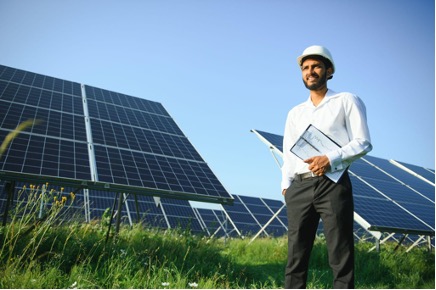 India’s commitment to sustainable development is evident through initiatives like the International Solar Alliance and its ambitious renewable energy targets. As of 2023, India has made significant progress in renewable energy deployment, particularly in solar power, aiming to achieve its target of 450 GW of renewable energy capacity by 2030. This commitment to renewable energy sources is a vital step in reducing greenhouse gas emissions and combating climate change.
However, India continues to face challenges in various areas related to sustainable development. Air pollution remains a significant issue, with several cities consistently experiencing poor air quality, impacting public health and the environment. Waste management is another area that demands urgent attention, as rapid urbanization and population growth have led to increased waste generation, straining existing waste management systems.
India’s SDG progress in 2023 demonstrates impressive achievements in poverty reduction, education, and sustainable development. The country’s commitment to improving the quality of life for its citizens is commendable. However, challenges in healthcare, gender equality, and sustainable practices require sustained efforts, policy reforms, and societal support to create a more inclusive and equitable India for all. By leveraging data-driven policies, collaborative partnerships, and inclusive strategies, India can continue on its path to becoming a model for sustainable development globally.
Data Source Reference Links:
India’s commitment to sustainable development is evident through initiatives like the International Solar Alliance and its ambitious renewable energy targets. As of 2023, India has made significant progress in renewable energy deployment, particularly in solar power, aiming to achieve its target of 450 GW of renewable energy capacity by 2030. This commitment to renewable energy sources is a vital step in reducing greenhouse gas emissions and combating climate change.
However, India continues to face challenges in various areas related to sustainable development. Air pollution remains a significant issue, with several cities consistently experiencing poor air quality, impacting public health and the environment. Waste management is another area that demands urgent attention, as rapid urbanization and population growth have led to increased waste generation, straining existing waste management systems.
India’s SDG progress in 2023 demonstrates impressive achievements in poverty reduction, education, and sustainable development. The country’s commitment to improving the quality of life for its citizens is commendable. However, challenges in healthcare, gender equality, and sustainable practices require sustained efforts, policy reforms, and societal support to create a more inclusive and equitable India for all. By leveraging data-driven policies, collaborative partnerships, and inclusive strategies, India can continue on its path to becoming a model for sustainable development globally.
Data Source Reference Links: